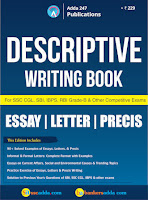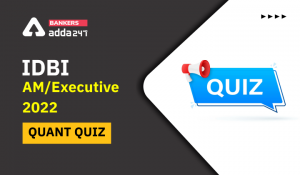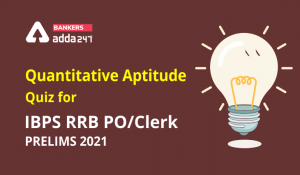Dear students,
Numerical Ability for SBI Clerk Prelims 2018
Today is the Day 28 of the SBI Clerk 60 Days Study Plan. Numerical Ability Section has given heebie-jeebies to the aspirants when they appear for a banking examination. As the level of every other section is only getting complex and convoluted, there is no doubt that this section, too, makes your blood run cold. The questions asked in this section are calculative and very time-consuming. But once dealt with proper strategy, speed, and accuracy, this section can get you the maximum marks in the examination. Following is the Numerical Ability quiz to help you practice with the best of latest pattern questions.
Directions (1-5): Table shown below shows population of five different cities. Some data is given in percent while some data is given in numbers. Study the table carefully and solve the following questions.
Directions (1-5): Table shown below shows population of five different cities. Some data is given in percent while some data is given in numbers. Study the table carefully and solve the following questions.
Note: Total population = Male + Female + Transgender
Q1. Population of city Z is what percent less than population of city Y.
(a) 30%
(b) 25%
(c) 20%
(d) 15%
(e) 17.5%
Q2. Ratio of literate male to Illiterate male of city A is 11 : 7. What is the different between literate male and Illiterate male of city A.
(a) 900
(b) 1050
(c) 1400
(d) 800
(e) 1200
Q3. Female population in city Z is how much percent less than male and transgender population of city A.
Q4. Male population of city B is how much more than female population of city X?
(a) 2900
(b) 2840
(c) 2760
(d) 2920
(e) 2980
Q5. Find the ratio of transgender population of city Z to the transgender population of city A.
(a) 4/5
(b) 5/4
(c) 3/5
(d) 5/3
(e) 2/5
Directions (6-10): The following pie chart gives the marks obtained by Vicky in an examination in five subjects. The total marks obtained is 450. Answer the questions based upon the chart.
Q6. What will be the percentage distribution of physics in the following pie chart?
(a) 20%
(b) 25%
(c) 30%
(d) 35%
(e) None of these
Q7. Vicky Scored 100 marks in Which of the following subjects?
(a) Math
(b) Chemistry
(c) Physics
(d) Computer
(e) None of these
Q8. The marks scored by Vicky in Computer and Physics together exceed the marks scored in Chemistry and English together by:
(a) 30
(b) 40
(c) 50
(d) 60
(e) 45
Q9. The average marks obtained by Vicky in the five subjects is:
(a) 82
(b) 90
(c) 95
(d) 76
(e) None of these
Q10. The subject in which Vicky scored approximately 222/9% marks is:
(a) Chemistry
(b) Computer
(c) Math
(d) English
(e) None of these
Directions (11-15): Study the following pie chart and table carefully to answer the following questions that follow:
Percentage break up of tourist who visited across various states of India and the ratio of men to women in them
Total Number of tourists = 1800
Percentage break up of tourist who visited across various states of India and the ratio of men to women in them
Total Number of tourists = 1800
Percentage Break up of tourist
Q11. What is the number of male tourists who visited of Goa and MP together?
(a) 632
(b) 674
(c) 684
(d) 649
(e) None of these
Q12. The number of female tourists who visited MP are what per cent of the total number of tourists who visited all states together?
(a) 7
(b) 5
(c) 19
(d) 15
(e) 11
Q13. What is the respective ratio of the number of female tourists who visited Uttarakhand and Jammu & Kashmir together to the total number of tourist who visited above mentioned two states states together?
(a) 35 : 33
(b) 23 : 51
(c) 22 : 31
(d) 3 : 7
(e) None of these
Q14. What is the approximate average no. of male tourists who visited all the states together?
(a) 212
(b) 210
(c) 223
(d) 208
(e) 206
Q15. The number of male tourist who visited Goa are what per cent of total number of tourist who visited Goa?





 Quantitative Aptitude Quiz For IDBI AM/E...
Quantitative Aptitude Quiz For IDBI AM/E...
 Quantitative Aptitude Quiz For IBPS RRB ...
Quantitative Aptitude Quiz For IBPS RRB ...





